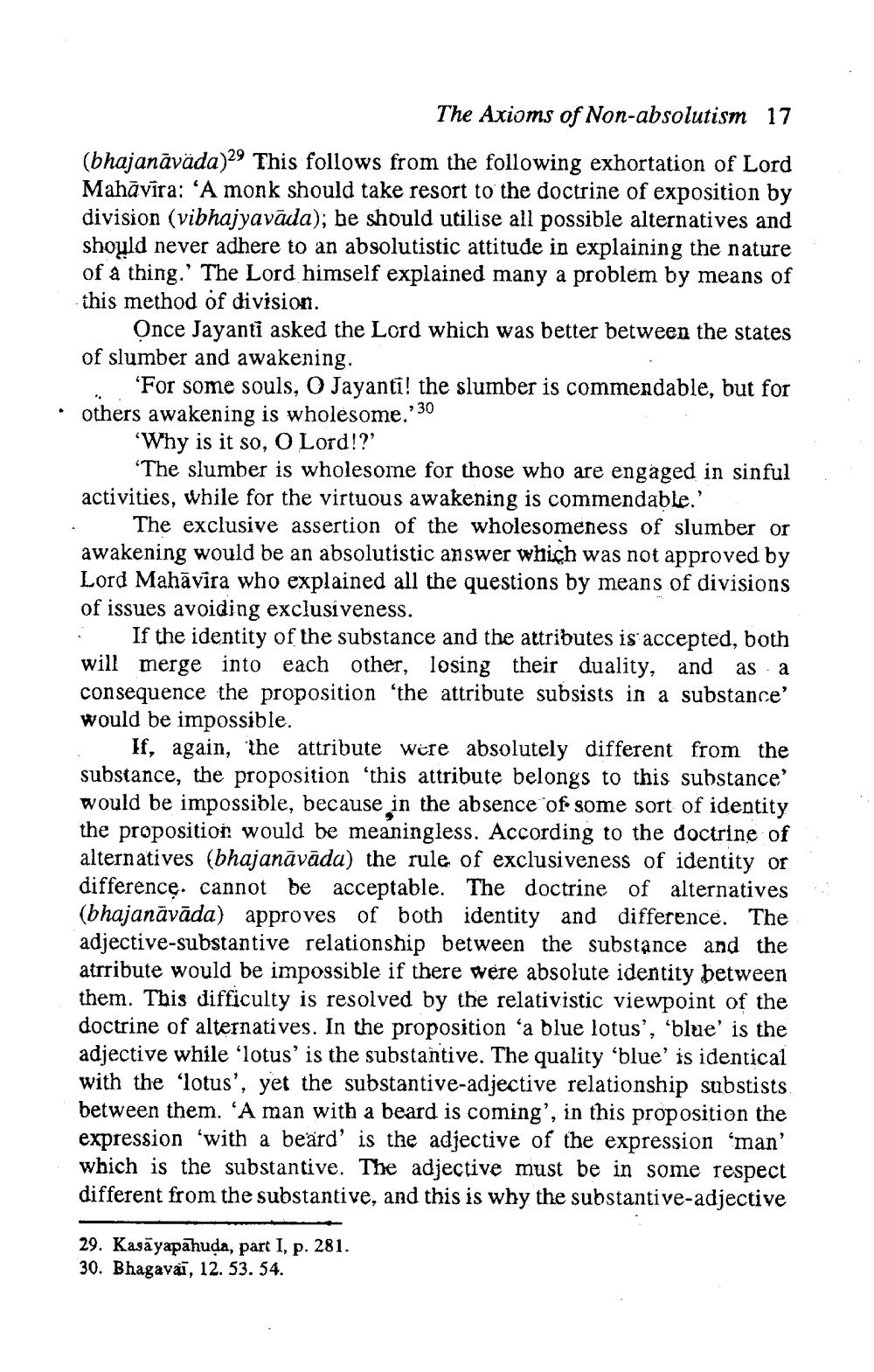________________
The Axioms of Non-absolutism
17
(bhajanāväda)29 This follows from the following exhortation of Lord Mahāvīra: 'A monk should take resort to the doctrine of exposition by division (vibhajyavāda); he should utilise all possible alternatives and should never adhere to an absolutistic attitude in explaining the nature of a thing.' The Lord himself explained many a problem by means of this method of division.
Once Jayanti asked the Lord which was better between the states of slumber and awakening.
. 'For some souls, O Jayanti! the slumber is commendable, but for • others awakening is wholesome.'30
'Why is it so, O Lord!?'
“The slumber is wholesome for those who are engaged in sinful activities, while for the virtuous awakening is commendable.'
The exclusive assertion of the wholesomeness of slumber or awakening would be an absolutistic answer which was not approved by Lord Mahāvira who explained all the questions by means of divisions of issues avoiding exclusiveness. : If the identity of the substance and the attributes is accepted, both will merge into each other, losing their duality, and as a consequence the proposition the attribute subsists in a substance' would be impossible.
If, again, the attribute were absolutely different from the substance, the proposition this attribute belongs to this substance' would be impossible, because in the absence of some sort of identity the proposition would be meaningless. According to the doctrine of alternatives (bhajanāvāda) the rule of exclusiveness of identity or difference. cannot be acceptable. The doctrine of alternatives (bhajanāvāda) approves of both identity and difference. The adjective-substantive relationship between the substance and the atrribute would be impossible if there were absolute identity between them. This difficulty is resolved by the relativistic viewpoint of the doctrine of alternatives. In the proposition 'a blue lotus', 'blue' is the adjective while 'lotus' is the substantive. The quality 'blue' is identical with the 'lotus', yet the substantive-adjective relationship substists, between them. 'A man with a beard is coming', in this proposition the expression 'with a beard' is the adjective of the expression ‘man' which is the substantive. The adjective must be in some respect different from the substantive, and this is why the substantive-adjective
LL
29. Kasāyapahuda, part I, p. 281. 30. Bhagavai, 12. 53. 54.




